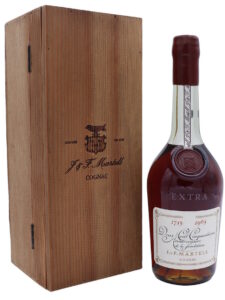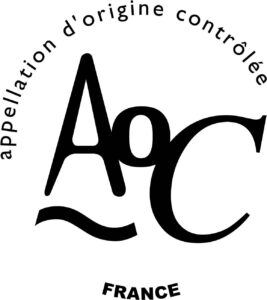Falsifications
Cognac is a generic name. In French it is called an appellation. They have been doing their best for many years now to protect their generic names. For this they have the appellation controlée. A large range of products are protected by this appellation controlée. The best known appellations are perhaps the wines, cheeses and, of course, cognac.
For example, it is not the intention to call a wine that is not made in the Bordeaux region “bordeaux”. And the same applies to cognac. A brandy may only be called cognac if it has been produced in the cognac region according to the requirements of the production method.
Yet, in foreign shops or on the Internet, you often come across cognacs that are not produced in the cognac region. The best-known are the Italian cognac, the Spanish cognac, the Armenian cognac and the Russian cognac.
As early as in 1891, international agreements were made at the Madrid Conference. These were called the Madrid Agreement of 1891 and were revised in 1900, in 1911 and in The Hague in 1925. Initially, only a handful of countries wanted to sign this agreement, but nowadays more than a hundred countries have signed. As of 1989, a protocol has been added. There are only a handful of countries of any importance that have not yet signed. To name a few: Argentina, Iraq, Yemen, Morocco, Nigeria, Uzbekistan and Belarus. Only very recently have Canada (2019), the USA (2013) and Afghanistan (2018) signed.
Signing this agreement is one thing, complying with it is another. For example, Armenia signed in 1991, but bottles of cognac still appear years later. Nowadays, most Armenian bottles have Armenian brandy neatly written on them.
And Italy, which signed as early as 1894, has been producing Italian cognacs for many decades.
Other important countries that still make ‘cognacs’ are Russia and the countries that formerly belonged to Russia.
But not only abroad. Cognacs that did not originate from the region were also made in France itself. Almost every wine region had its ‘cognacs’. However, this practice was quickly ended with the introduction of the appellation controlée. Dutch and Belgian cognacs were, however, still made well into the 20th century. Somewhere during the Interbellum, this came to an end.
To illustrate this, I have made some pages with falsifications.
Other falsifications are more difficult to recognize. This is one: 1904 Denis-Mounié.
 Denis-Mounié has produced many vintage cognacs, but never used Gold Leaf cognacs to make a vintage. Also the crescent shape label with 1904 on it, was never used by Denis-Mounié.
Denis-Mounié has produced many vintage cognacs, but never used Gold Leaf cognacs to make a vintage. Also the crescent shape label with 1904 on it, was never used by Denis-Mounié.
stop

 This Augier 1888 vintage has a neck label that was originally from a Balluteaud bottle. Augier did use crescent shape neck labels with a vintage indication on it, but they were just a bit different. Like the ones below.
This Augier 1888 vintage has a neck label that was originally from a Balluteaud bottle. Augier did use crescent shape neck labels with a vintage indication on it, but they were just a bit different. Like the ones below.
This is a magnum. Croizet never put a paper shoulder label on the bottle where they used to put wax. If it would be a genuine vintage, they would have stamped the year in wax on the shoulder.
A Napoleon with Très Vieille Fine Cognac from Salignac, Réserve de l’Aiglon. The paper neck label with ‘Réserve 1959’ must have been added later on. There are no known vintages after 1929 from Salignac. And if so, it would have been printed on the label itself.
On the left you see a three star bottle with a 1925 sticker on it. The borders of the label are not the same as the borders of the sticker. If this would have been a vintage, it would have been printed on the label.
On the right side you see the three star bottle that has been used.

Martell Anniversaire label on a Martell Extra bottle and with a non-matching wooden box.
 This bottle was brought to my attention by a relation friend who runs an online shop in cognac and other spirits. The bottle number is Roman instead of Arabic and the plastic seal is really bad. The sticker on the plastic case does not exist on other bottles. This bottle was first seen in 2024.
This bottle was brought to my attention by a relation friend who runs an online shop in cognac and other spirits. The bottle number is Roman instead of Arabic and the plastic seal is really bad. The sticker on the plastic case does not exist on other bottles. This bottle was first seen in 2024.


Eschenauer has not used this kind of capsules.
It could have been just recapsuled, but then it had not been done at a certified body.
1889 and 1898 looks to be added later on.
Eschenauer would put the year just under ‘fine champagne’

This 1858 label (sticker) does not belong on this bottle on the left. Below is a genuine 1858 from Sazerca de Forge (Second Empire).










Comments
Falsifications — No Comments
HTML tags allowed in your comment: <a href="" title=""> <abbr title=""> <acronym title=""> <b> <blockquote cite=""> <cite> <code> <del datetime=""> <em> <i> <q cite=""> <s> <strike> <strong>